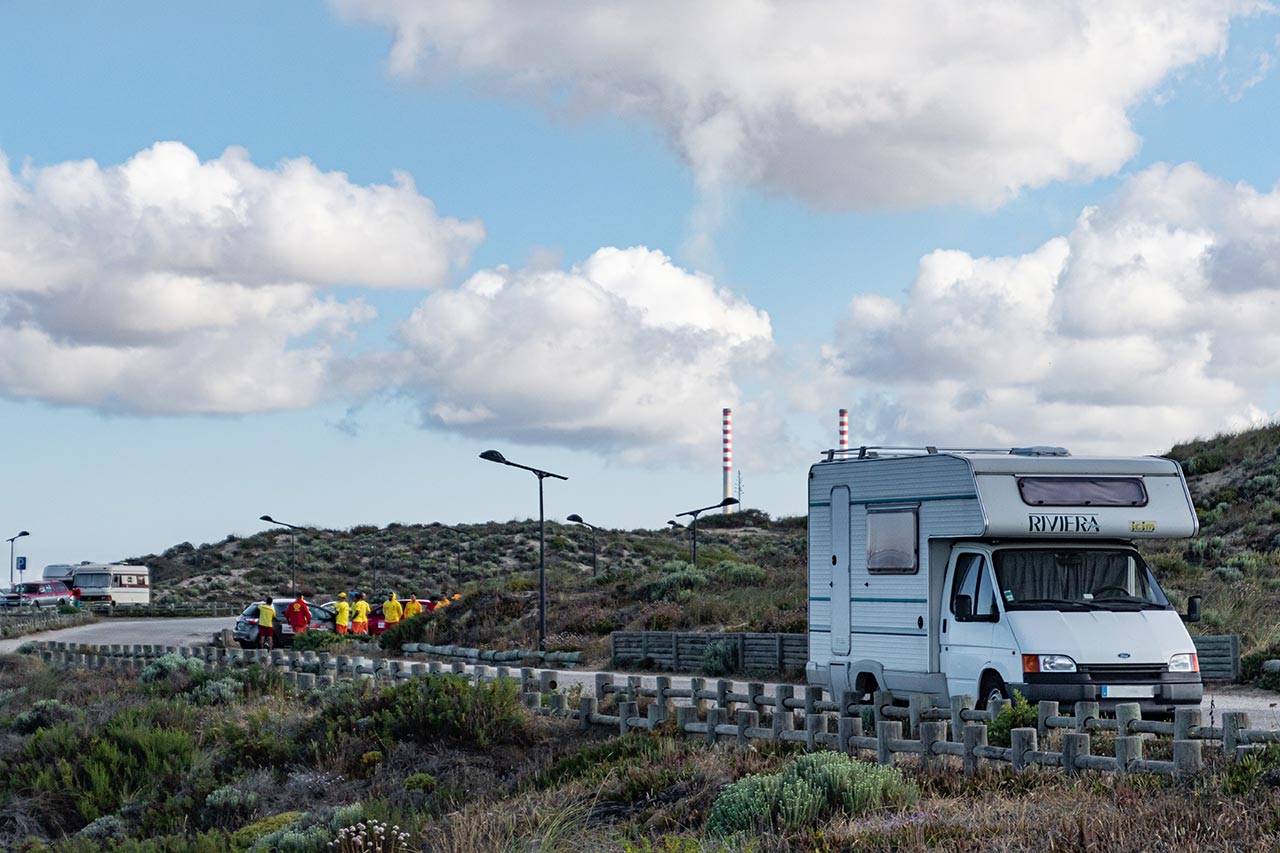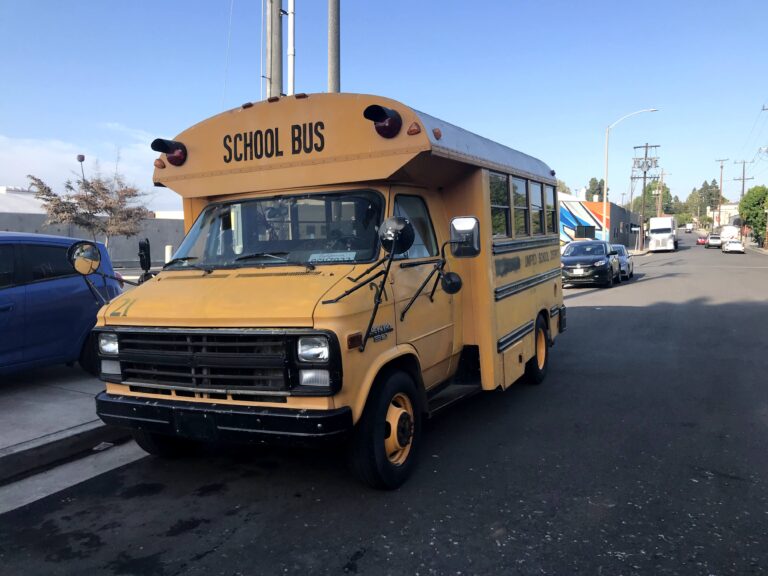When you’re thinking of doing full time travel there are a multitude of options for a vehicle to live in; Tiny Homes, Skoolies, Vans, Trailers, Truck Bed Campers, and RVs. But which class RV is best for full time travel? Even when you’ve decided you’re going to pick and RV there are still more options to narrow down your selection. The benefit of RVs over a build-your-own tiny home or a skoolie is that you already have a prebuilt floor plan, plumbing and propane all hooked up, and all wiring set up too. Maybe you don’t want a huge building project or don’t trust yourself to do electrical work or to use power tools. Maybe you just want to get out on the road and start exploring! Then an RV might be your best choice for travel transportation.
RVs come in three main body types: Class A, Class B and Class C. Class A RVs are very large and usually square shaped, like a charter bus. Class B RVs are very similar to a large van, just converted into a livable space already. And then you have Class C RVs, they have the body of a large van but have a loft built over the drivers area. There are several factors to keep in mind when choosing between the three RV class options. Sometimes it can get overwhelming, I hope that after reading this simple comparison it will make your choice a little bit easier!

Class A RVs
Class A RVs are the largest of the three options and also the most expensive. These RVs are good if you need more space while on the road. Whether you have kids, large pets, or you just like having space. A Class A might be the right choice for your travels. These spacious RVs can be quite luxurious, especially if you get one with pop-outs. Pop-outs allow your RV walls to expand almost doubling your space. However, you can only use pop-outs while parked and if you’re in a compact city. Then, this can get difficult, if even possible. They also allow more room for accommodations like a washing machine and dryer. And can even come with built in stabilizers for staying level on uneven ground.

Are you going to be traveling to a lot of cities and planning on parking for the night? Having a Class A RV can make this quite difficult. Of course parking is tough, since you’ll have to try to parallel park at times. This can prove to be challenging, even with a backup camera. Parking can also be tough because large cities tend to have bans or parking restrictions for large recreational vehicles. You may see street signs that say “No Parking for Vehicles 22 Feet Long or 7 Feet Tall”. Or, you may not see signs at all and it could still be illegal to park in certain areas. Before traveling to a city be sure to look up the local parking restrictions and laws.
Class A RVs are also more difficult to find a mechanic that can work on them. Since they are so heavy and tall it can be hard to find a place that has the room in their facility to accommodate. And if you do find someone to work on it then they can charge quite a bit more since the supply is low. And in an emergency your demand for service is high. The parts also cost more with these larger RVs. And if something major goes wrong it can become too expensive to be worth it

Class B RVs
These RVs are actually the smallest of the RV types. While they resemble a large van they are packed with most of the amenities of the other RV options. These are great if you don’t want to drive a large vehicle and are ok with the limited space. They are great at being discreet and getting into tight spaces, you can even park in some garages too.
If you are worried about the crazy amount of gas it costs to push your home across the world, the Class B’s are your best option. You can get double and sometimes triple the gas milage in a Class B. When compared to a Class A or C. If you plan on going very long distances a Class B will save you a lot of gas costs.
But these RV do have a few drawbacks. Since they are small they can get really cramped inside especially if you aren’t traveling alone or even if you’re just above average height. Class B RVs have a shared room for the toilet and shower known as a wet room. Wet rooms aren’t bad but some people prefer to have more space when they shower. Now if you’re the more adventurous type, then you might be fine using a composting toilet and an outdoor camping shower. But some people appreciate having simple things like working plumbing and a nice place to do your business.

Class C RVs
Class C RVs are the middle ground of the options. They are small yet big enough to house a couple and maybe even a dog too. And if you’re tall, don’t worry you can comfortably walk around in most Class C RVs. I’m over 6 feet tall and in my Class C I can walk around. And I still have about 6 inches to one foot space above my head. They come in varying lengths too, from 20 foot to over 30 foot long. They also usually have a loft area over the driver’s area. This allows a separate space for sleeping from your living space. A Class C RV Has a driver’s area that is more separated from the living space, unlike the large Class A RVs.
Class C RVs are built on a truck or van bodies. That’s why they feels a lot more natural to drive especially for new RV owners. And if you get a shorter RV you can drive it around tighter curves and spaces. Unlike you would be able to do with a larger RV like a Class A. This allows you to get to some cool secluded campsites and areas that you can’t access with a larger vehicle.

The average Class C RV is only around 250 square feet. Even though you’ll have a good amount of space it still doesn’t even compare to what a Class A will give you. So you need to be conscious of the amount of stuff you want to have with you while on the road. Plus you’ll want to have space for anything that you may acquire while traveling. It helps to live a more minimalist lifestyle while traveling in a smaller RV like a Class C.
Class C RVs generally come with most of the home amenities people are used to like a: sink, stove, oven, shower and toilet. However, Class Cs don’t usually have space for something like a washing machine and dryer. So you’ll have to either find a laundromat or do it the old fashioned way with a bucket and clothes line. There are alternative to this though, you can make your own manual powered washing machine or buy a bachelors mini load washing machine that can run off of solar power.

Decision Time
Even older RVs aren’t super cheap always, you have to do a lot of research of the current and local market in your area. If you do end up getting an older RV because the cost is more convenient do keep in mind the drawbacks of having an older vehicle. Most people only use their RVs a couple times a year, if that. So you could get a great deal on an older RV that hasn’t been driven that many miles compared to how old it is.
If you live in a state that requires a smog check on vehicles (like California) then make sure to have a mechanic get a full check up and diagnostic on the RV before you buy. Depending on how old the RV is you could actually not be required to have a smog check. In California, if your vehicle was built in 1975 or earlier then you don’t need to get it smog checked.
Now that you know the basics of the three RV class choices, it’s time to pick! Or maybe not, maybe you want to take a whole different route and live in a trailer or Tiny Home instead. But if you do decide on an RV as your mode of travel transportation then I hope you have a better understanding of your options now.









